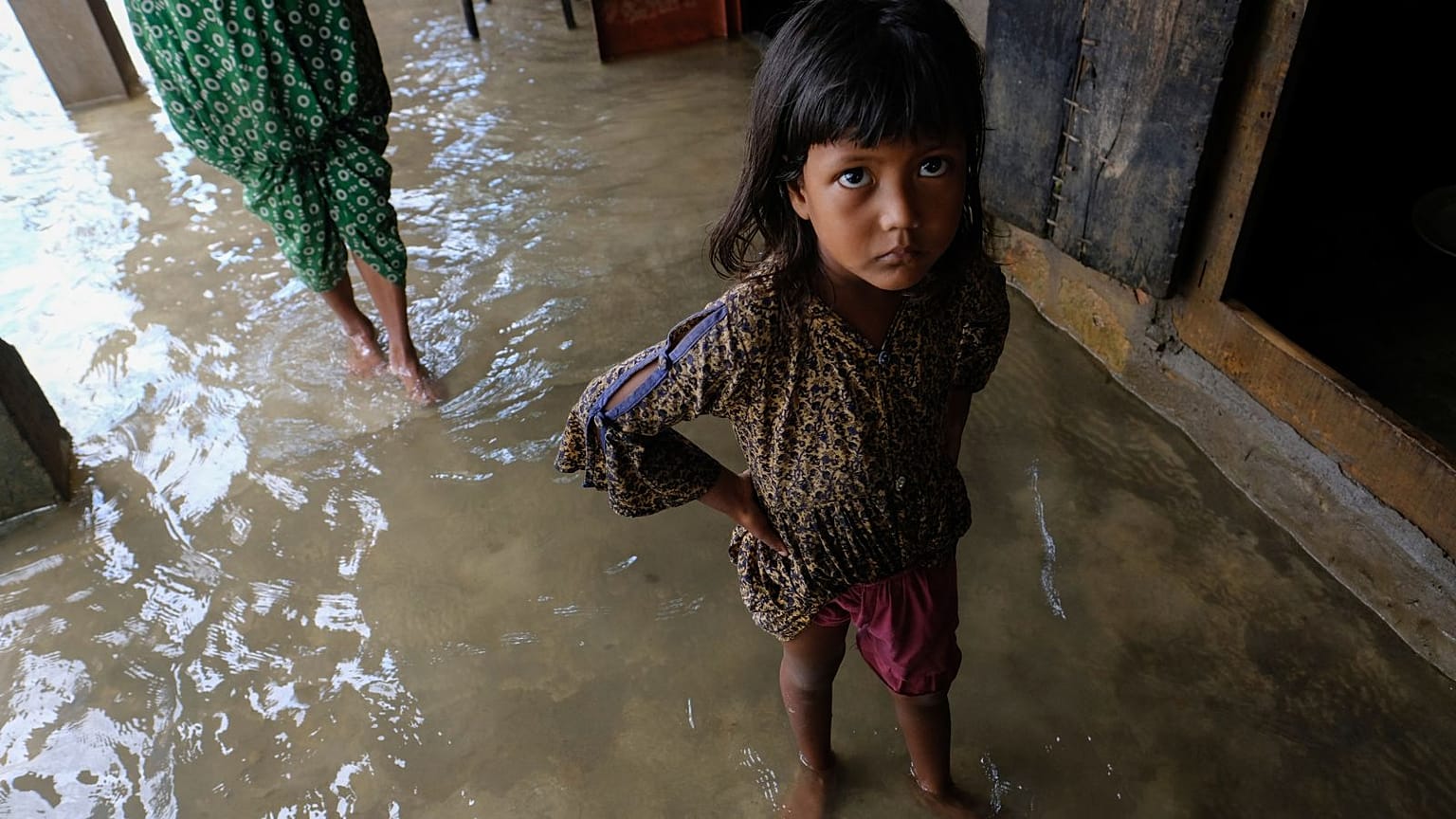As more saltwater and freshwater mixes, arsenic leaching could cause health issues for several other countries too, researchers warn.
Bangladesh is well known to be one of the countries most imperilled by the climate crisis.
Its sea-level is expected to rise half a metre by 2050, claiming around 11 per cent of the land. Intensifying monsoon rains currently flood around a fifth of the nation every year, driving families from their homes.
But these water disasters are also posing a more insidious threat to the Bangladeshi people: arsenic contamination.
Around 49 per cent of the country’s drinking well water - which almost everyone drinks - has unsafe limits of carcinogenic arsenic.
And a new study has found that the climate crisis is making the situation worse - pointing to a looming public health crisis in Bangladesh.
“Issues such as arsenic and climate change is inflaming an already dire situation in Bangladesh,” Md Tahmidul Islam, technical lead at WaterAid Bangladesh, tells Euronews Green.
Cyclones, floods, parching heat are all intensifying, tearing up homes, toilets, roads, farmland. With clean water always the first thing to go, this reality is leaving almost 26 million people being exposed to saline water and struggling to survive.
Why are Bangladeshis drinking water poisoned with arsenic?
Arsenic is naturally present at high levels in the groundwater of a number of countries, including Bangladesh, Argentina, Cambodia, Chile, China, India, Mexico, Pakistan, the US and Vietnam.
Bangladesh’s problem with the toxic contaminant dates back to the 1970s, when there was a concerted effort to move the population away from drinking polluted surface water in which waterborne diseases spread.
The government, UN aid agencies and NGOS installed around 10 million drinking water wells in the country, which succeeded in lowering the devastatingly high rate of child deaths.
But by the 1990s it became clear that the water drawn from sedimentary rocks contained high levels of inorganic arsenic. Around 97 per cent of Bangladesh’s 165 million strong population still drink well water, however.
Almost half of Bangladesh's area has drinking well water with arsenic concentrations that exceed the 10 micrograms per litre (μg/L) guideline from WHO, a team of scientists found in 2002.
Chronic arsenic poisoning can cause skin lesions on people’s palms and feet. Internally, the buildup of arsenic in their organs causes cancer. It has also been associated with cardiovascular disease and diabetes, and detrimental cognitive development impacts in those exposed from a young age.
The lead author of the previous study, Dr Seth Frisbie of Norwich University in the US, has led a new investigation - published in the journal PLOS ONE yesterday - to see what impact climate change is having on this already severely compromised water source.
How is climate change making arsenic poisoning worse?
Increased amounts of arsenic are directly tied to rising sea levels and more severe flooding, the scientists say.
Frisbie’s team collected drinking well water samples across all of Bangladesh, testing their arsenic concentration as well as dissolved oxygen concentration and other elements.
They found that the concentration of arsenic increases as the concentration of dissolved oxygen decreases - a phenomenon that can be caused by rising sea levels.
Two chemical processes known as ‘reduction’ and ‘the salt effect’ mean that more arsenic is leaching from the sediment as saltwater encroaches into the aquifer.
“This increased exposure to arsenic is expected to increase the rates of death and disease from chronic arsenic poisoning,” Frisbie writes in the study.
This unfolding crisis is not limited to Bangladesh, Frisbie told UK paper The Independent. “The same chemical processes from rising sea levels that release arsenic from sediments into Bangladesh’s drinking well water will also very likely release arsenic from sediments into West Bengal’s drinking well water.”
The scientists called for a quicker roll out of solutions like water purification technologies and infrastructure to prevent groundwater contamination, the paper reports.
“Groundwater could be the world’s insurance policy against climate change and save millions of lives. But investment in responsible groundwater development, such as better mapping and monitoring of the earth’s subsurface to determine where good-quality groundwater is available and extractable, is needed urgently so everyone has clean water nearby,” comments WaterAid’s Md Tahmidul Islam.
The charity is calling on world leaders to invest in clean water, decent toilets and good hygiene to work with communities to introduce context-specific technologies. These include rainwater harvesting systems, reverse osmosis plants, climate resilient toilet blocks and faecal sludge treatment plants to secure life-saving water and sanitation for communities living on the climate frontline.



















